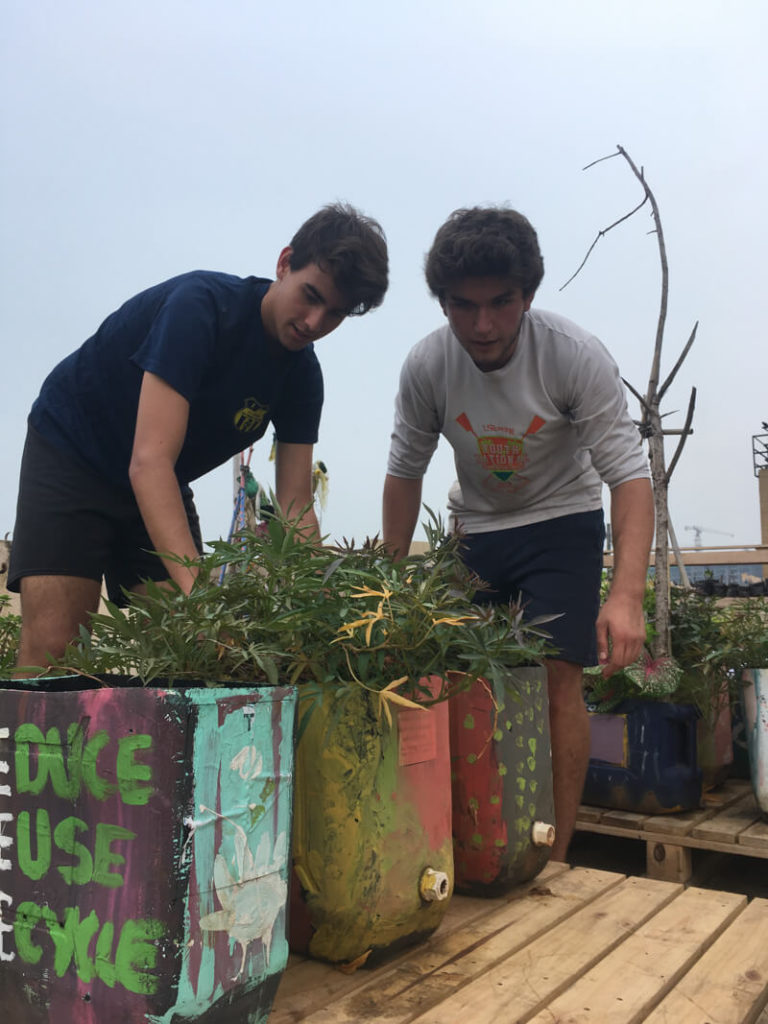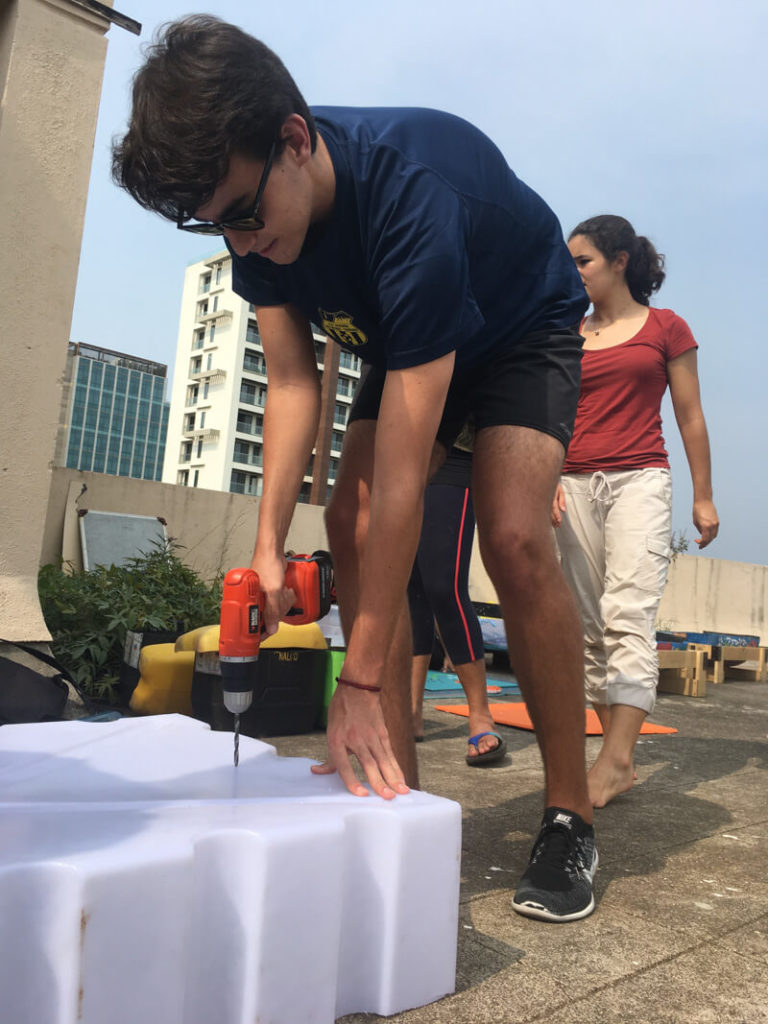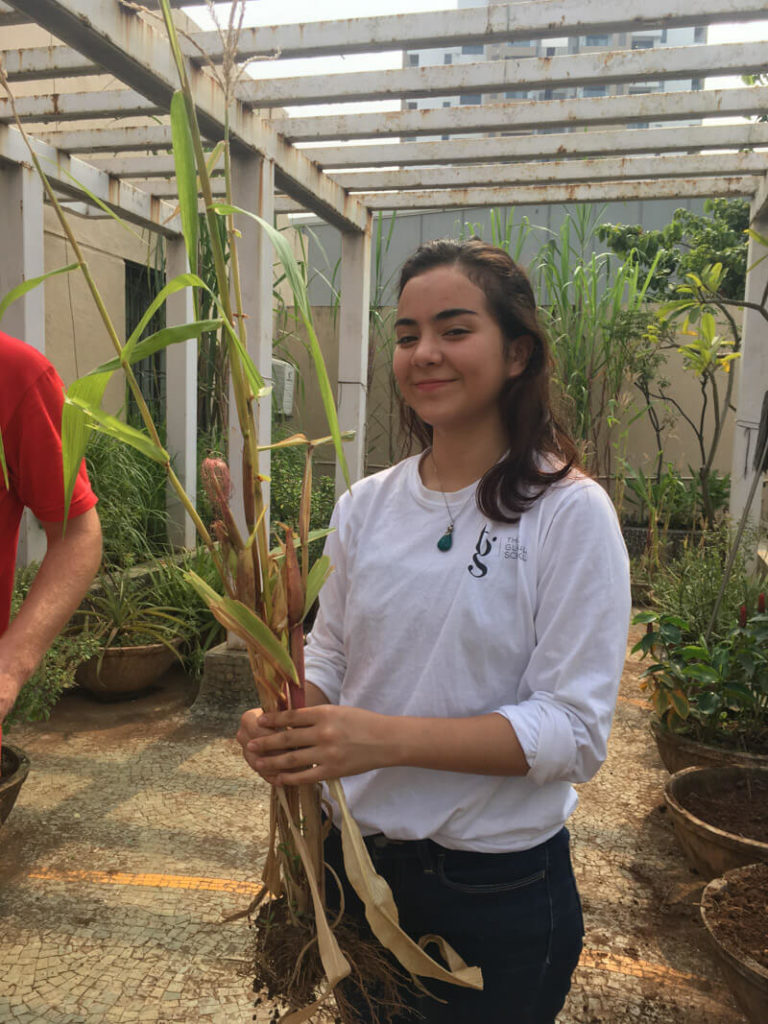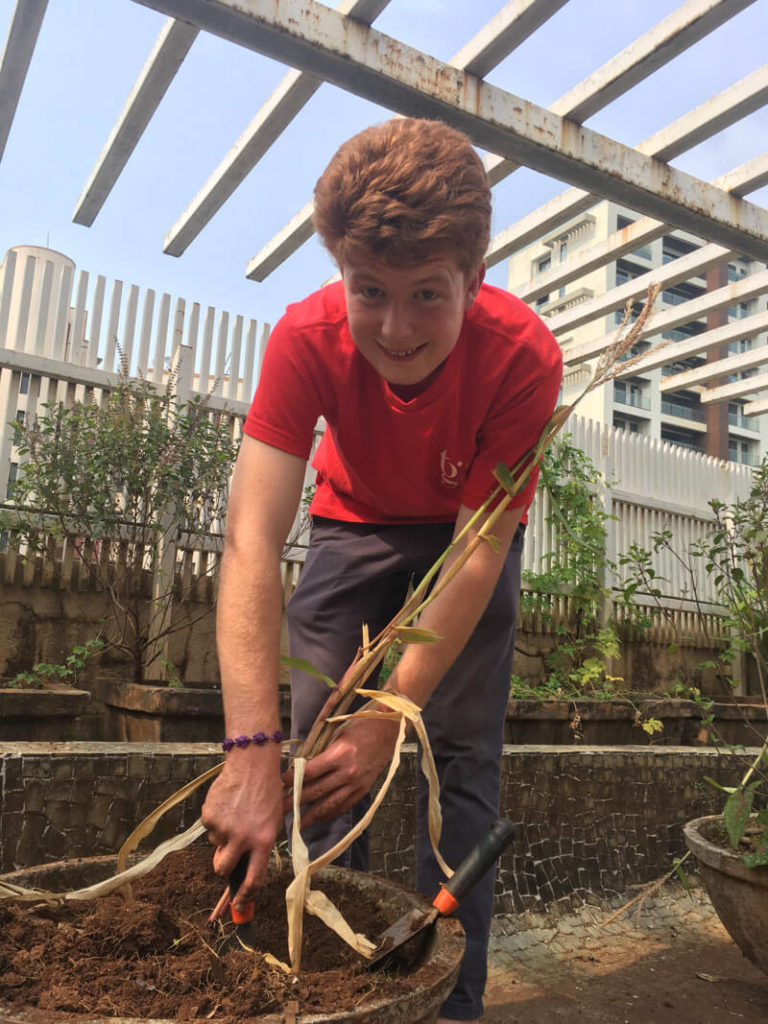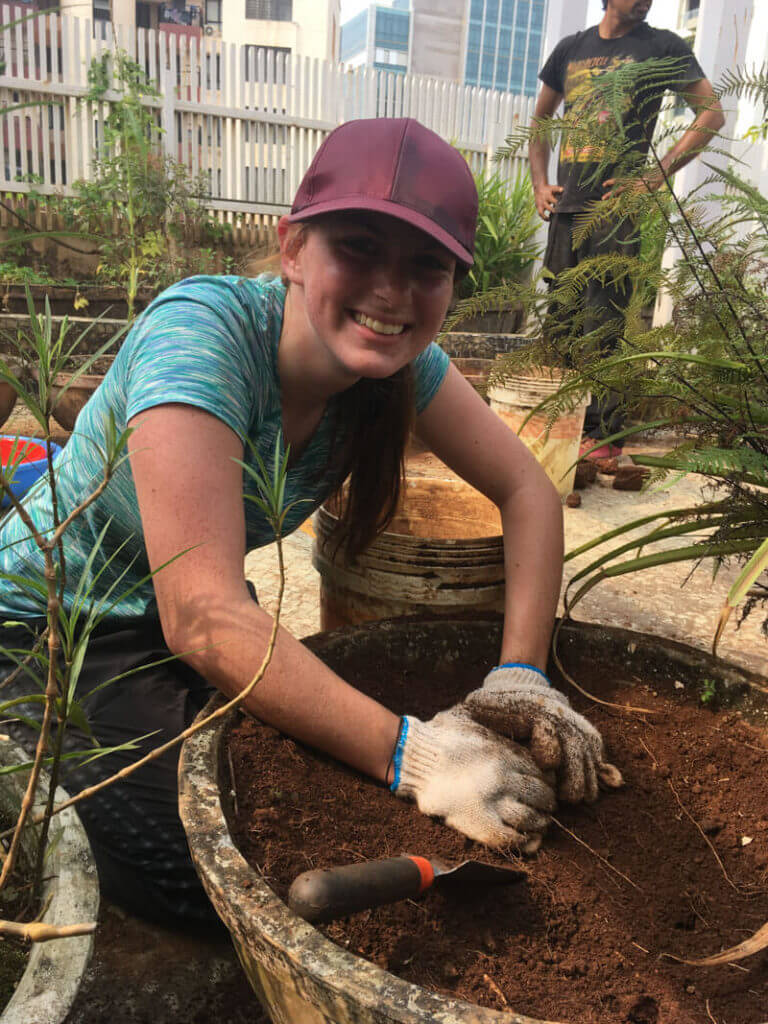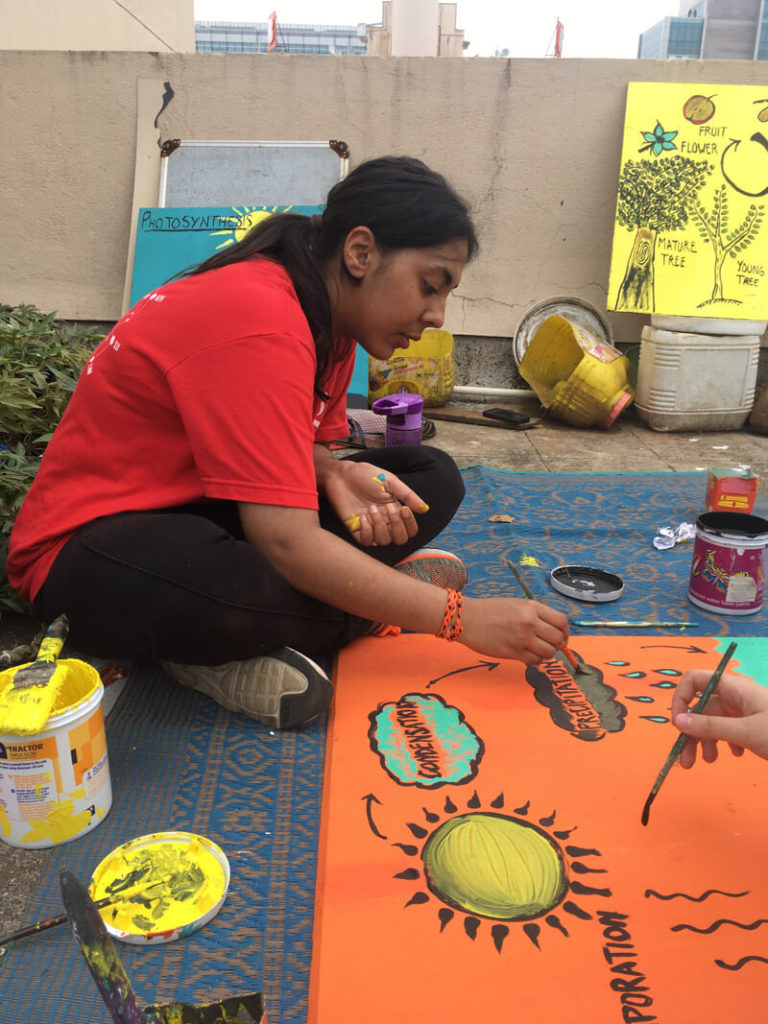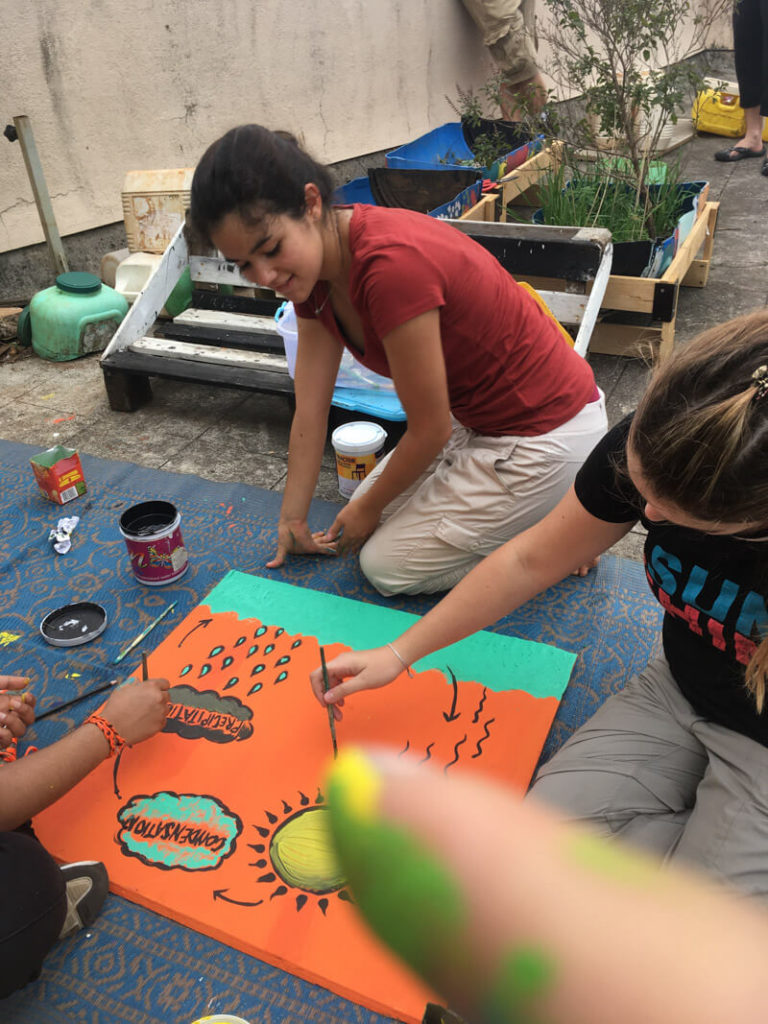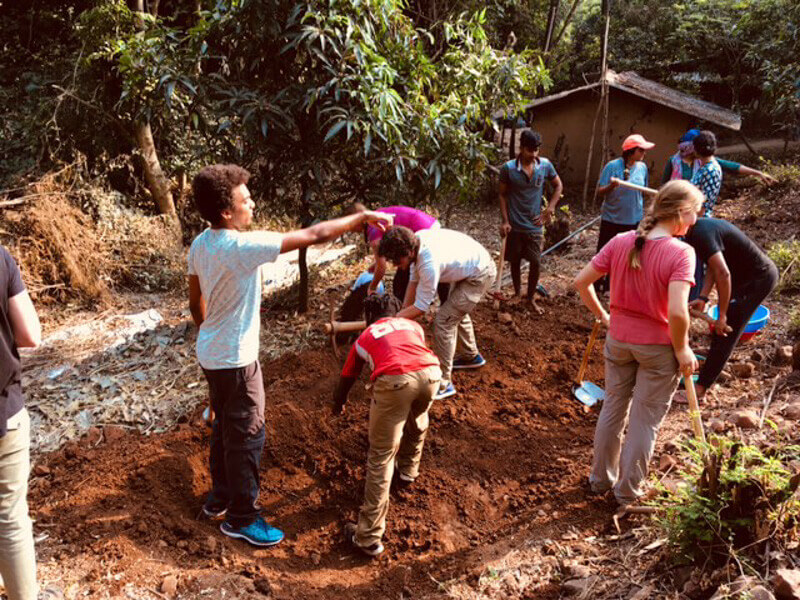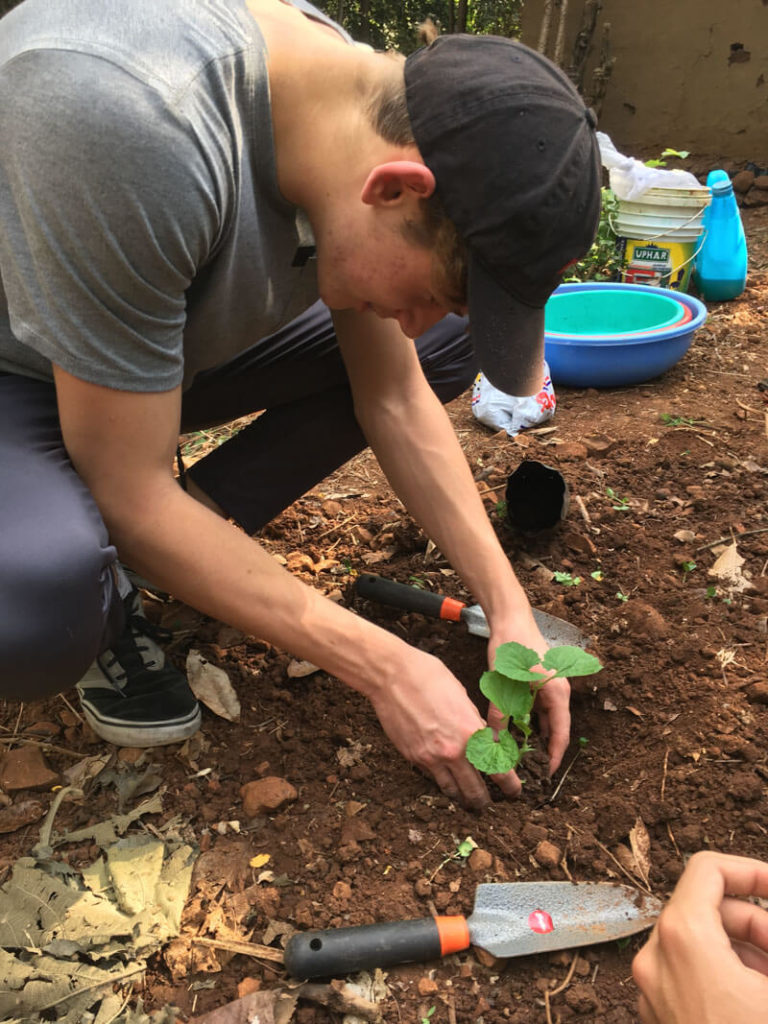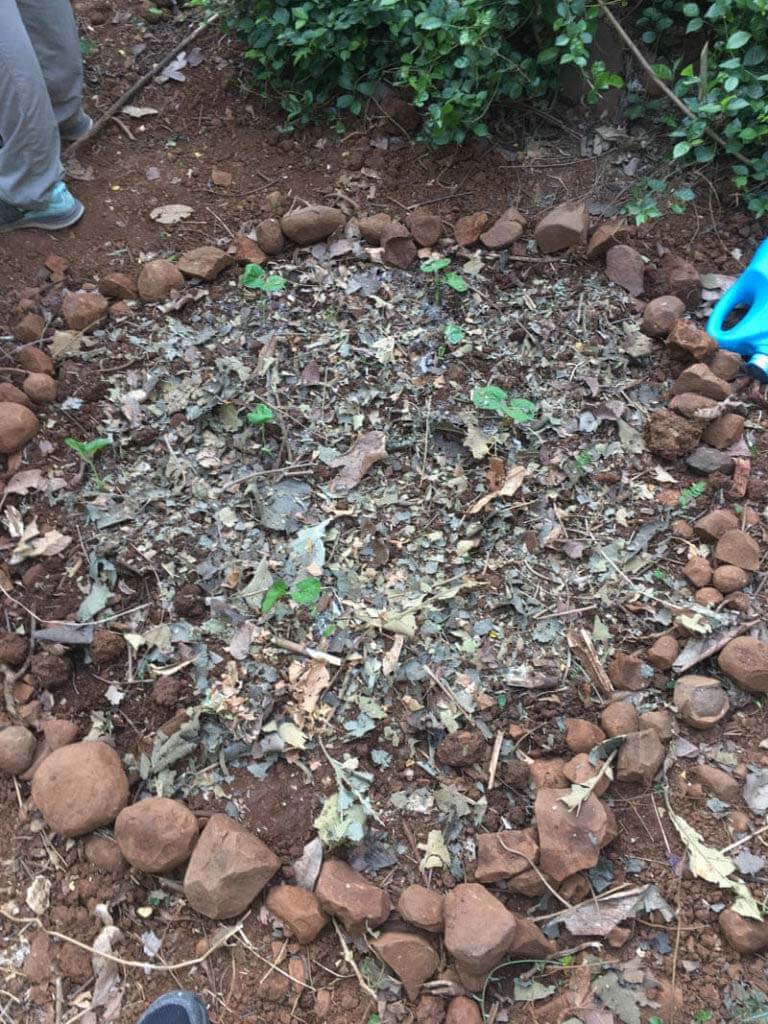1) Hi Nada, can you tell us what you've been up to since graduating from THINK Global School in 2022? Since graduating in 2022, I've been pursuing a passion I found while at TGS, sustainability, and I am currently majoring in engineering in renewable energy systems at Al Akhawayn University, in Ifrane, Morocco. But there is way more than that! I've had a chance also to explore the world of...
Read MoreTHINK Global School students have been working in partnership with Academy for Earth Sustainability (an NGO that offers project-based learning experiences in Mumbai) in order to gain a deeper understanding of environmental and sustainability issues in Mumbai, especially around the Dharavi slum area. The Grade 12s designed four different projects geared around environmental learning to benefit a local chapter of Save the Children India:
- Website and e-store development for AES
- Cushion construction
- Garden maintenance
- Knowledge board project
These four different projects, playing off of the skills of the students, was a way for us as a school to give back to those in need within our temporary home of Mumbai. Our work was focused on developing and servicing the garden of a school whose mission is to educate at-risk children with physical and educational impairments. We hope that, through these projects, we will be able to have a long-lasting, positive impact on the school and on the kids in their care.
Introduction to Dharavi: Slum Tour
Our tour group company, Be the Local, led us in small groups through the canals and small businesses that make up the Dharavi slum, one of the most densely populated regions in the world. As we wandered through the trash-strewn streets that make up this square-mile city, our guides informed us that the slum, which contributes roughly USD 650 million to the local economy, hosts a number of essential economic and environmental industries such as recycling, leather tanning, soap production, clay pottery, baking and embroidering. “The city would not work if Dharavi shut down for a day” was a common sentiment shared by our host city specialist and guides as we walked through the throngs of people and waves of recycling stations, each being heavily attended to.
As we were invited to walk through the residential walkways and recreational areas, our Dharavi tour included a glimpse into the average housing unit of the local Dharavi family, where we met children playing in, with, and whatever they could. We walked through a few more of the outer and main streets, navigating past a few large intersections where cars run down the roads at all manner of velocities, announcing themselves with their horns and stopping only when forced to. Few, if any, places on earth exist like Dharavi, and it was quite the introduction to our CAS experience and what would be an exhilarating IB term.
Gardening Group
Upon our first entrance to the school, none of us were entirely sure what we were planning to do. We were going to spend our first session investigating its current conditions to conceive ideas of viable projects. Luckily for us, the janitors came prepared with assignments, for the first week the entire group was essentially the maintenance group, splitting into two factions.
One group worked outside moving dozens of potted plants into the sunlight and constructing nurseries while the other group moved to the school’s garden rooftop and worked cutting and transporting pipes. Our intermediate session was the most physically gruelling, as we transported large pots and containers of soil from the fifth floor to the ground floor outdoors. We powered through the intense heat to move these items as it was necessary to clear the floor as the building was sinking due to its weight. Due to our efforts, we successfully moved what was described as “three weeks work” for the two employees in the three hours we had. And although we didn’t completely finish the task, we helped significantly.
This is an example of how we started with something small and simple, and now it’s really going to help the students and teachers. This made me really happy. -Pauli C.
The final session comprised of the maintenance group splitting up to complete several smaller tasks. Part of the group worked to construct a container of healthy compost by removing dead organic matter, applying cow dung, and releasing a fair number of worms into the soil. The other parts of the group focused on drilling and decorating large plastic boxes and painting buckets of soil that will eventually hold larger plants. Finally, a small party concentrated their efforts on moving and organizing a variety of different plants on the pallets.
Overall, the maintenance effort was able to achieve our original goals of helping to sustain a practical environment in which disabled children can learn and relax.
Cushion Construction
When we initially toured the garden space, we noticed that though there were already chairs for the children to sit on during their classes, they were particularly uncomfortable. When sat on for long periods of time, the wood starts to irritate you and there were potentially dangerous nails and splinters coming from the chairs. We figured that it was likely that the children could potentially become distracted by this as well as it just being uncomfortable for sitting in during lessons. So we decided to construct some outdoor cushions to cater for this issue. We measured the chairs to find the right dimensions, then purchased some fabric to create a prototype. Due to a lack of sewing machines, we hand sewed a pillow cover. We then filled it with newspaper to get an idea of how much stuffing we would need. We used this prototype to ensure the final cushions would be just the right size. Then we went on to make the final cushions. During our experience constructing the cushions, we learnt the reality of having to physically construct an item to solve a problem without the use of tools. Back home we would usually just purchase a cushion if we needed one, but physically constructing something from scratch is a whole other story. At times it was difficult to sew; we became tired, and because the cushions were large, it took a long time to sew them by hand. The whole experience was really worthwhile because we felt that we were able to make a positive difference towards improving the learning experience for the children of Save the Children.
Web Development Group

Photo by Chung Man Chan
Over 90% of non-profit work involves some form of logistics. Oskar and I decided to help support AES by developing an e-store. Improving the garden at Save the Children India, which most of the grade did, must be paired with a platform to sell the plants for the project to work effectively. After an initial brainstorm with Kriti, our AES contact, we decided the website development platform, Wix, would be the best way forward.
We decided to go with Wix because it has a powerful e-store plug-in which can be set up within minutes. Furthermore, Wix’s platform can be used with ease allowing Kriti to make changes in the future.
Kay then took photos of each plant and manipulated them in Photoshop to make them more presentable and professional for the website. Meanwhile, Oskar put together the website on Wix. We then put together our work and finalized the design and content of the website. According to Kriti, the e-commerce shop has already been a big hit, with the initial batch of plants selling out on the first day. If you’d like to have your own plant shipped, you can visit the Living Labs site here and purchase one today.
Knowledge Board Group
The three of us set (Uttie, Pauli, and Chloë) out with one idea in mind: making learning in the garden both useful and enjoyable. By enjoyable, it was understood that we would be making learning resources fun for both teachers and students to use.
We then agreed to build a ‘Knowledge Board’ project which would have two components. The first was researching information on plants, organizing it, translating it in Hindi, and printing both English and Hindi versions on small flash cards, which could then serve as an garden plant information database for the children to consult. The second part consisted of taking wooden boards and painting them with scientific/agricultural concepts which would soon be taught to students and for which it is useful to have visual resources. We came up with these ideas after a few brainstorming sessions, added to them, and planned for the materials and time we would need. Each of us brought something to the discussion, and our collaboration was particularly useful when we were able to recognize each other’s skills and distribute jobs evenly and accordingly.
Moreover, we wanted our “Knowledge Board” to have an impact in the overall learning process of the students. In order to do so, we had to go through the student’s curriculum, provided to us by the organiser of the gardening project, and then come up with three themes that we could creatively represent. After some discussions and sharing of ideas, the group decided that photosynthesis, the plant growth cycle, and the water cycle, were three concepts we could visually explain through diagrams, arrows, and colors.
The knowledge boards were a task that involved planning and collaboration, and I think that our team achieved that very well. We were able to distribute rules and help each other throughout the process. We undertook challenges together and we celebrated the accomplishments together, as well. Our aim of making interactive and aesthetically pleasing boards was only achieved through our teamwork, as we painted, collected facts and completed the entire process through each other’s support and guidance.
Although we wish we had a little more time to pursue other projects in order to make the garden space more interactive and educational, we were proud of our efforts and look forward to doing something similar in the future, as this was a comprehensive process that made us give back to the community we are receiving from.
Aarey Forest Colony
For the latter part of the term, half of our group worked on the outskirts of Sanjay Gandhi National Park to directly aid members of the Warli tribe. The Warli tribe are an indigenous people that are facing pressure from the government and big companies for their land, which, although they have a right to be on, is some of the most highly sought after land for development in Mumbai. In an attempt to push the Warli people out so that the land can become part of the cityscape the Warli are not given running water, electricity, or any sort of the government benefits usually reserved for groups on the fringes of society. Developing here would not only force out these people, but it would encroach on a valuable forest ecosystem that provides refuge for thousands of species, and a much needed source of oxygen for the city of Mumbai.
We worked here on Fridays, helping out in whatever way we could. During our first session we were told the information provided above and introduced to the Warli’s forest garden. A primary source of their food, this permacultural garden needed another soil bed, so we spent a couple of hours digging, collecting detritus, stomping on leaves, tipping out manure, and layering it all into a wonderfully fertile creation. We were shown around, learnt about the Warli people and their style of painting, and told stories of how this group had inhabited the surrounding land for generations.
I think what really stood out to most of us was just how close this national park sits to urbanization. No matter how dense the trees were in the area where we worked, we could always hear the sounds of the highway; Or look up and see where the cityscape leered over the park, almost as if it were a stagnant promise of the area’s eventual development. Nevertheless, Kriti and the rest of the team coached us through the work and took special care to make sure we understood each of the natural processes that made their lifestyle work. Everything we did from plant nurseries to the spreading of cow urine was explained and elaborated on in a way which reinforced the innate ingenuity of the people that lived there. Sanjay Gandhi National Park should not be conserved for intrinsic reasons alone – the Warli people know the lay of the land best and are able to enhance the area’s natural capital.
A lot of the time, even though we were the volunteers, it felt as though they were the ones truly helping us. With the time and effort they put into teaching us and strengthening our understanding of the ecosystem, they probably could have dug another soil bed or two. But they were patient and kind despite their circumstances, offering a hospitality one would usually avoid with strangers. In the end, I guess we could describe the experience in environmental terms as a mutualistic relationship. Thanks to everyone who made this experience possible!



